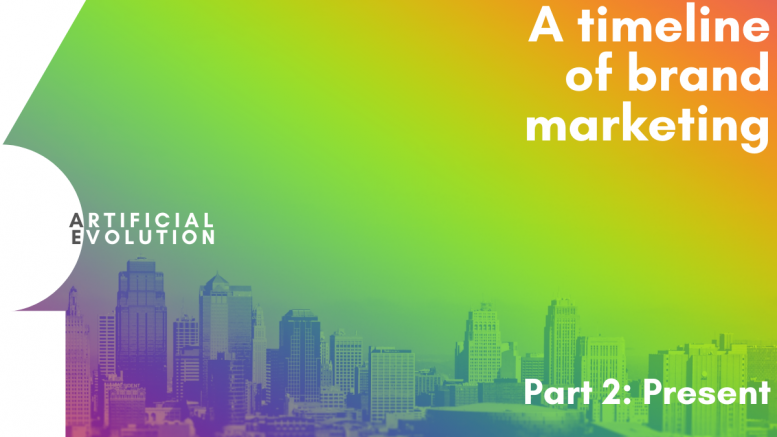Author’s note: Last week we spoke about what brand communications used to be like – just before the internet changed the game. A quick recap: things moved slowly back then. For a more comprehensive recap, here is the link to ‘Part 1’ of the series. Much to the relief of many, this week’s lingo is a bit more understandable because it aims to discover how far we have come.
Back to the Present
The digital age prompted by the cheap and wide accessibility of the internet not only paved the way for advancing creative technological developments but has introduced a new way of living. I know you have heard enough of this, but an infamous virus (that continues to leech onto us) has only been a catalyst to the adoption of digitisation. Whether it is buying groceries from an app or connecting with clients sitting across the globe, brands have started reaching consumers at their doorstep.
The Digital Evolution – No Scratch That. I Mean, the Digital Revolution
Would you believe me if I told you that Google is only 23 years old and YouTube is at sweet 16? Even at their seemingly nascent stage, these young digital platforms have carved a remarkable journey.
The term ‘digital marketing’ was first used in the 1990s with the development of Web 1.0. In this initial stage, users could look for information but could not share it over the web. The digital strategies of the marketers of the time were still limited as the development and accessibility to the technology was not extensive enough for marketing investments. Regardless, the first clickable banner was live in ’93 and from ’94 new technologies started to make their way into the digital marketplace.
The next revolution came in 1998 with the launch of Google and within two years of its inception, the web giant eliminated the smaller search engines and essentially became the place where audiences turned to look for (without an exaggeration) EVERYTHING.
In the following phase, Web 2.0 the passivity of the internet users transitioned to one where audiences became more central and influential. The static design of the web pages became more flexible to foster two-way communication. The content was user-generated wherein audiences could speak to the website which simply means that people could now upload content instead of only receiving it. This phase was the provenance of social media – the three-way conversation facilitator wherein members could not only talk to the website but also other members. This includes platforms such as Facebook, Twitter, YouTube, Instagram, etc.
Currently, the very act of consuming media creates a social data layer that feeds important data about a consumer to the brand: what do audiences like, what do they watch, what is holding their attention, and where they are located. This data has been assisting brands in devising a brand communication strategy – one that will be viewed, shared, and hopefully loved.
Unlike how it happened in the past, brands today are not merely about the products they sell but now businesses have stories and compelling narratives to hold the attention of their customers. They aspire to deliver an “experience.” Of course, the foundation still needs to be strong – no amount of great marketing is going to sell a bad product, but the focus and the dynamic in the internet age shifted.
However, this age of social media and the internet has also raised the bar for brands expecting them to learn and grow faster or to become redundant. The Manobyte speaks about how the internet changed brand communication and what it takes for a brand to succeed in the quick-paced life of today.
Now, let’s explore some fascinating achievements of the digital age.
The Tool-Box of Today
This is the world of real-time and personalisation – a simple Google search will reveal the truth of this statement validated by staggering statistics. While there are several digital communication channels that continue to assist brands in connecting with different customers, here are three technologies that have had an irreversible impact on brands of all sizes: –
- E-commerce: Unrestrained by location, the development of e-commerce allowed businesses to dream bigger. The cost of having a website was a lot cheaper than owning a physical store and it allows businesses to reach more people.
- Advertising: Unlike outdoor advertising where your business is also advertised to those who have no interest in your product or service, online advertising enabled brands to target the right audience through certain communication tactics. This included undertaking keyword analysis or expanding your knowledge about Google AdWords.
- Analytics: Regardless of what brands tell people about the product, what matters is how the product or the service is perceived by the customers. Having this significant piece of information can help brands improve their communication strategy and also better their product or service.
As internet addiction grows stronger by the hour, band communications are at the threshold of a pivot point. The “what’s next” question comes with the promise of a more immersive brand conversation – to know more, come back next week.
Meanwhile, stay safe. Stay secure.
See you next week.
The views and opinions published here belong to the author and do not necessarily reflect the views and opinions of the publisher.



Leave a comment